1. Season Overview and Big-Picture Planning
If you’re weighing the best time to stand in a sunlit cove, hear rushing creeks, and watch fog braid through ridges, you’re already halfway into A Guide to the Best Time to Visit the Great Smoky Mountains. This range is a true four-season destination: spring erupts with wildflowers, summer brings lush canopies and long hiking days, fall sets the hills on fire with color, and winter clears the air for crystal views and fire-warmed cabin nights. The “best” time depends on your priorities—flowers or foliage, solitude or festivals, waterfall spray or snow-dusted overlooks. The sections below decode each season with practical detail, so your dates match your dreams.
2. Spring: Wildflowers, Waterfalls, and Shoulder-Season Calm
From late March through May, the Smokies act like a living field guide. Trillium, spring beauty, lady’s slipper, and bloodroot pop under leafing hardwoods, while creeks roar from snowmelt and rain—perfect for waterfall chasers. Temperatures swing: cool mornings (40s–50s °F) warm to pleasant afternoons (60s–70s °F). For many travelers, this is the sweet spot in A Guide to the Best Time to Visit the Great Smoky Mountains because crowds are thinner than October and rates are friendlier than July.
What spring feels like on the trail
Expect mud on lower trails and lingering ice at higher elevations early in the season. Pack a light rain shell, waterproof footwear, and a cozy layer for overlooks like Clingmans Dome. Wildflower walks in Porters Creek and Little River are highlights, while Abrams Falls thunders with photogenic volume.
Case note
A photographer from Oregon flew in mid-April chasing ephemeral blooms. She built her schedule around early morning light in Greenbrier and an afternoon loop through Elkmont’s mossy bridges. Her verdict: “I came for the trillium, but I stayed for the way the forest smelled after rain.”
3. Summer: Family Adventures, Long Days, and Cool Escapes
June through August delivers warm valley temps (70s–80s °F) with blissfully cooler high-country retreats in the 60s–70s. Streams invite wading, synchronized fireflies sparkle in early June, and long daylight narrows the gap between “too much to see” and “just enough time.” This is prime time for families, tubing in Townsend, and loop hikes that end at a swimming hole.
How to stay comfortable in summer
Start hikes at dawn to beat heat and parking crunches. Choose ridgeline routes for breezes—Andrews Bald and the Appalachian Trail segments near Newfound Gap are reliable. Afternoon storms roll in fast; a breathable rain jacket and dry bag for your phone are worth their weight.
Traveler snapshot
A New Jersey family booked a July cabin week. They split days between early hikes (Laurel Falls on weekdays), mid-day museum time in Townsend, and sunset picnics at the Foothills Parkway. Their teenagers rated the trip “10/10—mostly because of tubing and blackberry cobbler.”
4. Fall: Peak Foliage, Scenic Drives, and Photography
Late September through early November is the headline act of A Guide to the Best Time to Visit the Great Smoky Mountains. Elevation changes stagger peak color, so golds and reds sweep downslope over weeks. Early color glows on the highest ridges late September; mid-elevations blaze in mid-late October; valleys and Cades Cove carry the finale into early November.
How to time your leaf-peep
Aim midweek, book early, and chase elevation bands. Sunrise from Morton Overlook, a lunchtime stroll on the Oconaluftee River Trail, and a blue-hour cruise on the Foothills Parkway can capture three palettes in one day. Photographers: a circular polarizer deepens hues after rain.
Story from the road
Two friends from Chicago planned a “foliage sprint” with a compact SUV and a stack of playlists. They kept spontaneous stops—apple stands, a barn quilt sighting, a roadside fiddle jam in Gatlinburg—and swear the unplanned detours delivered the most vivid frames of the trip.
5. Winter: Quiet Trails, Frosted Peaks, and Cabin Time
December to February trades foliage for silence and big, clean vistas. Air clarity can stretch mountain layers to the horizon, and occasional snowfall transforms spruce-fir crowns into storybook silhouettes. Valley temps hover in the 30s–50s °F, while higher elevations run colder with potential ice. If solitude, value, and starry skies call to you, winter might secretly be your “best time.”
Making winter work
Pack microspikes for icy switchbacks, a thermos for hot tea, and flexible plans if upper roads close temporarily. Many restaurants and attractions stay open with shorter hours, and cabin fireplaces make early sunsets feel like an amenity, not a compromise.
6. Crowds, Costs, and Timing Strategies
Crowds crest in June–August and mid-October weekends. Shoulder weeks (late April, early May, late August, early November) balance access and ambience. Costs rise with demand; booking 60–90 days out secures choice cabins and in-park lodgings. Arrive at marquee trailheads by sunrise, explore lesser-known valleys by mid-morning, and save popular visitor centers for late afternoon when parking eases.
Pro move
Reverse the classic day: scenic drive at dawn, long hike 9–1 on a less famous trail, nap and early dinner in town, golden-hour stop at an overlook, then a short night hike for stargazing. This rhythm side-steps the noon surge without feeling rushed.
7. Weather by Month and What to Pack
January–February: Cold mornings, possible snow at altitude; pack insulating layers and traction.
March–April: Rapid mood swings—sun, showers, and chilly shade; waterproof shells and warm mid-layers.
May–June: Pleasant warmth, increasing humidity; sun protection and creek-friendly footwear.
July–August: Warm valleys, afternoon storms; quick-dry clothing, electrolytes, and a compact umbrella.
September–October: Goldilocks hiking weather; layers for crisp mornings, light flannels for evenings.
November–December: Cool, stable air; gloves, beanies, and a camera for long-range views.
Packing mindset
Think “modular”: a small daypack with a breathable rain jacket, insulating layer, headlamp, water filter, and a printed map. Elevation drives microclimates—what’s true at 1,500 feet isn’t guaranteed at 6,000.
8. Wildlife Calendar and Ethical Viewing
Cades Cove and Cataloochee are classic for black bear and elk sightings. Spring offers newborn wildlife and active birds; summer brings butterflies and fireflies; fall features elk bugling in Cataloochee; winter tracks tell quiet stories in fresh snow. Keep 50+ yards from bears and elk, store food securely, and use zoom lenses rather than approaching. Wild encounters are privileges—treat them that way.
9. Sample Itineraries and Real Traveler Stories
3-day spring sampler
Day 1: Porters Creek wildflowers, afternoon coffee in Townsend, sunset on Foothills Parkway.
Day 2: Abrams Falls early, lunch in a riverside picnic area, Elkmont’s old cabins then ice cream in the evening.
Day 3: Clingmans Dome at dawn, Newfound Gap overlook hopping, cozy bookshop hour during a rain burst.
4-day fall color chase
Day 1: Blue Ridge Parkway spur from Cherokee, Oconaluftee River Trail stroll.
Day 2: Alum Cave to Inspiration Point, late lunch, sunset at Morton Overlook.
Day 3: Roaring Fork Motor Nature Trail, craft galleries, night walk under Orion.
Day 4: Cades Cove sunrise loop, mill stop, farmhouse porch photos.
Traveler story: the weather pivot
On a blustery February morning, a solo hiker planned Charlies Bunion but found rime ice on the trail. She pivoted to the quieter Kephart Prong Bridge walk instead—moss, wintergreen, and a creek that sounded like applause. Her lesson: flexibility turns “bad weather” into a better memory.
10. Expert Picks: Trails, Drives, and Hidden Corners
For first-timers: Laurel Falls (go at dawn), Clingmans Dome (clear-day jackpot), and Cades Cove (bikes on loop road mornings in season). For deeper cuts: Deep Creek’s triple-waterfall circuit near Bryson City, the spruce-fir hush of Andrews Bald, and a picnic pullout on the lesser-traveled Foothills Parkway West. Each option slots neatly into A Guide to the Best Time to Visit the Great Smoky Mountains depending on your calendar.
Food and stays
Farmhouse breakfasts, barbecue after long hikes, and cabins with porches for cicada soundtracks round out the day. If you’re eyeing romantic cabins or family suites near trailheads, availability tracks the seasons described above—book accordingly.
11. Booking Tips and Next Steps with Refined Travel
Dial your dates to your priorities—wildflowers (April), long hiking days (June), foliage (mid–late October), or quiet cabins (January). Build in dawn starts, mid-day breaks, and golden-hour drives. For curated lodging near your target trailheads, timed activities, and flexible backup plans, explore options with Refined Travel. If you’re ready to move from dreaming to doing, plan your journey now and let the mountains meet you halfway.



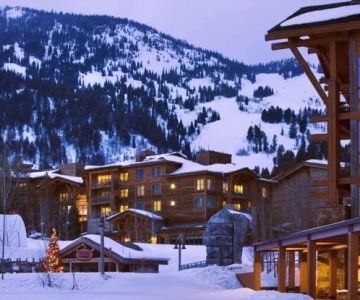


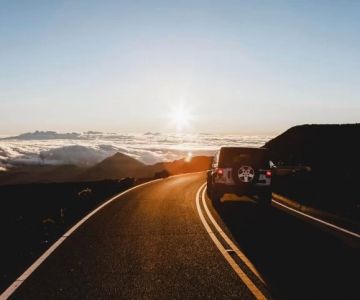
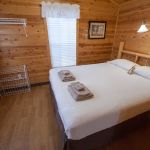 Wilmington KOA Holiday4.0 (997 reviews)
Wilmington KOA Holiday4.0 (997 reviews)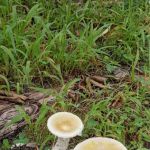 Holly Lake Campsites4.0 (36 reviews)
Holly Lake Campsites4.0 (36 reviews)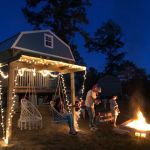 Trestle View - RV Park and Campground5.0 (19 reviews)
Trestle View - RV Park and Campground5.0 (19 reviews)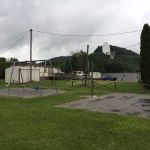 Raleigh Court Mobile Home Park3.0 (20 reviews)
Raleigh Court Mobile Home Park3.0 (20 reviews) Sunset RV4.0 (203 reviews)
Sunset RV4.0 (203 reviews) Clay County Park Campground4.0 (303 reviews)
Clay County Park Campground4.0 (303 reviews) Exclusive Travel Packages for First-Class Travelers: A Guide to Luxury Vacations
Exclusive Travel Packages for First-Class Travelers: A Guide to Luxury Vacations Refined Travel Experiences in Southeast Asia: Explore Luxury & Unique Destinations
Refined Travel Experiences in Southeast Asia: Explore Luxury & Unique Destinations How to Make the Most of Luxury Vacation Deals: Expert Tips for Savvy Travelers
How to Make the Most of Luxury Vacation Deals: Expert Tips for Savvy Travelers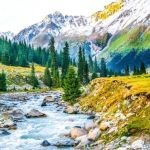 How to Enjoy a Refined Travel Experience in the Mountains
How to Enjoy a Refined Travel Experience in the Mountains Refined Travel Itineraries for Art and Culture Lovers: Explore the World of Art and History
Refined Travel Itineraries for Art and Culture Lovers: Explore the World of Art and History Most Luxurious Destinations for Honeymooners: Top Spots for Romance and Luxury
Most Luxurious Destinations for Honeymooners: Top Spots for Romance and Luxury